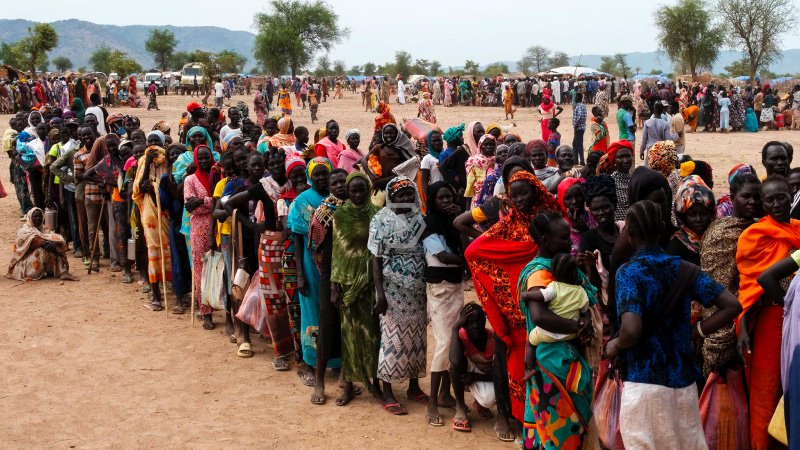- 14 areas in Sudan, including parts of Khartoum, Darfur, and Kordofan, face famine risk due to prolonged conflict.
- 755,000 people are experiencing “catastrophe” level hunger; 8.5 million people face severe food shortages.
- The IPC warns of potential famine if conflict escalates, based on food security assessments.
Sudan is on the brink of a severe humanitarian crisis, with 14 areas at risk of famine if the conflict between military factions continues to escalate. The Integrated Food Security Phase Classification (IPC) has highlighted that parts of Khartoum, Darfur, Kordofan, and El Gezira state are particularly vulnerable.
The IPC’s report indicates that 755,000 people in Sudan are facing catastrophic levels of hunger, with a total of 8.5 million people experiencing severe food shortages. This dire situation calls for urgent international intervention to prevent famine, as seen previously in Somalia and South Sudan.
Sudan on the Verge of Famine Due to Prolonged Conflict
The conflict between Sudan’s army and the Rapid Support Forces (RSF) has created a severe humanitarian crisis, placing 14 areas at risk of famine. The Integrated Food Security Phase Classification (IPC) has identified parts of Khartoum, Darfur, Kordofan, and El Gezira state as being at significant risk. Since the conflict began in April last year, food security has deteriorated rapidly, affecting millions of people across the country.
According to the IPC, 755,000 individuals are currently experiencing catastrophic hunger levels, with a total of 8.5 million people facing acute food shortages. The ongoing war has not only disrupted food supplies but also triggered massive displacement, creating the largest internal displacement crisis globally. The violence has intensified in regions like Darfur, further complicating relief efforts and access to aid.
The IPC uses a five-phase scale to assess food security, with Phase 5 being the most severe. Famine, the most extreme level, can be declared when at least 20% of the population faces extreme food shortages, 30% of children are acutely malnourished, and the daily mortality rate exceeds two deaths per 10,000 people. The current situation in Sudan meets many of these criteria, indicating a high probability of famine under a worst-case scenario.
Since its establishment 20 years ago, the IPC has declared famines only twice: in Somalia in 2011 and South Sudan in 2017. The impending crisis in Sudan underscores the urgent need for coordinated international action to prevent a similar catastrophe. The international community must prioritize humanitarian aid and support efforts to stabilize the region and address the root causes of the conflict.
Immediate international intervention is crucial to prevent famine in Sudan and mitigate the impact of the ongoing conflict on millions of vulnerable people.
“Famine can be declared if at least 20% of the population in an area are suffering extreme food shortages, with at least 30% of children acutely malnourished and two people out of every 10,000 dying daily from starvation or malnutrition and disease.”



